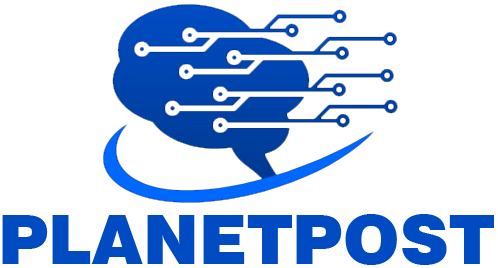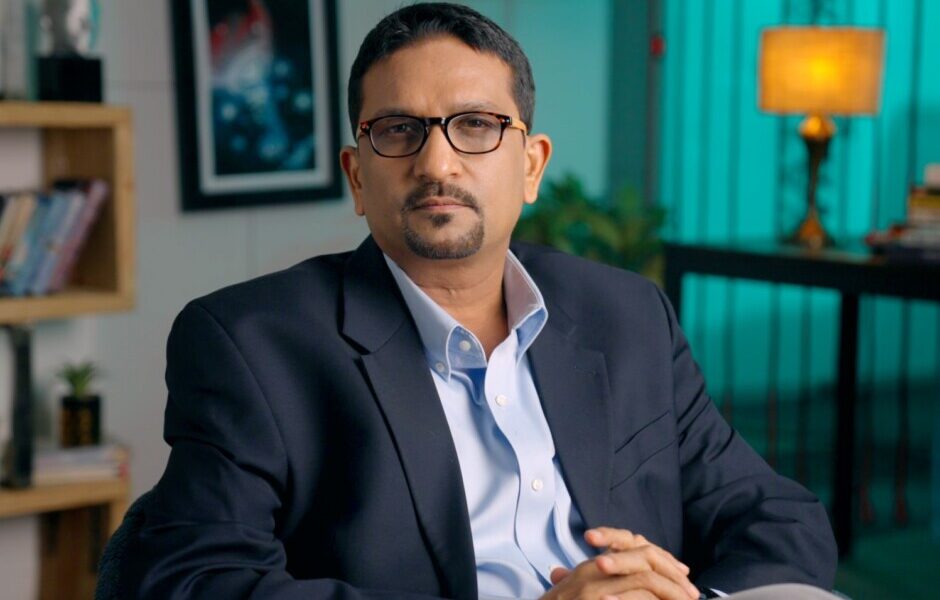Pankit Desai is the co-founder and CEO of Sequretek, a company specializing in cybersecurity and cloud security products and services. In 2013, he co-founded Sequretek with Anand Naik and has played a key role in developing the company into a prominent provider of cybersecurity and cloud security solutions. Prior to Sequretek, Pankit held various leadership and management positions in the IT industry at companies including NTT Data, Intelligroup, and Wipro Technologies. He holds a degree in computer engineering and brings a strong background in technology and entrepreneurship to his role.
Sequretek’s cybersecurity expertise, strengthened by cloud-based solutions with real-time, AI-driven threat detection and response, enables businesses to confidently take control, grow, and safeguard their digital assets while maintaining regulatory compliance.
What inspired you to co-found Sequretek, and how has the company evolved since its inception?
The cybersecurity landscape has long been marked by disparity, where the top 10% of companies have access to comprehensive, cutting-edge solutions, while the rest struggle with limited resources and expertise. This industry, which often caters to the elite, leaves many organizations navigating a maze of 90+ technology categories and thousands of vendors, resulting in fragmented approaches that complicate security decisions. At Sequretek, we saw this as an opportunity to change the narrative. When we founded the company in 2013, our mission was clear, to make cybersecurity simple and accessible for all, not just the few who could afford it.
Our approach has always been about consolidation and simplification. Instead of adding to the complexity with more niche solutions, we set out to build an integrated platform that addresses the key pillars of cybersecurity—endpoint security, identity governance, and threat detection—under one roof. We envisioned a world where businesses could focus on growth without the fear of cyber threats disrupting their journey. By combining AI-driven automation with a holistic strategy, we’ve empowered our clients to stay secure in the face of evolving risks, making cybersecurity a growth enabler rather than a roadblock.
What were the initial challenges you faced when starting Sequretek, and how did these shape the company’s strategy in cybersecurity?
Starting Sequretek in 2013, we encountered several challenges that significantly influenced our approach to cybersecurity. The most pressing issue was the steep fragmentation of the industry—there were too many niche solutions addressing specific security problems without an integrated approach. It was clear that if we wanted to make a meaningful impact, we needed to consolidate security capabilities and deliver a unified solution that was easy to implement and manage. This insight drove us to develop our integrated Percept platform, which covers endpoint security, identity governance, and threat detection in one place.
Another challenge was the prevailing perception that cybersecurity was a luxury reserved for large enterprises with substantial budgets. This mindset left a significant portion of the market underserved, exposing smaller companies to considerable risks. As a result, our strategy has always been focused on simplifying security by automating routine tasks, reducing the need for specialized security teams, and lowering the cost of ownership.
Could you tell us about the core philosophy behind Sequretek’s product suite and how it aligns with your original vision?
The core philosophy behind Sequretek’s product suite is rooted in the belief that cybersecurity should not be a luxury, but a fundamental right for all businesses, regardless of their size. From the outset, our vision has been to simplify security by consolidating complex technologies into a single, cohesive platform. We observed how companies were struggling with a fragmented security landscape, where they needed multiple tools to manage different aspects of cybersecurity. This created inefficiencies and increased the risk of vulnerabilities going undetected.
This philosophy is reflected in our Percept platform, which was designed to eliminate silos and provide a unified view of an organization’s security posture. By leveraging AI and automation, Percept streamlines security operations, allowing companies to detect and respond to threats with greater speed and accuracy. Our focus on automation not only reduces the burden on security teams but also lowers the cost of ownership, making enterprise-grade security accessible to businesses that may not have large IT budgets.
What distinguishes Sequretek from other players in the AI-driven cybersecurity field?
Sequretek stands out by simplifying cybersecurity through an integrated approach. While many competitors offer isolated solutions, we consolidated endpoint security, identity governance, and threat detection into our unified Percept platform. This reduces the complexity that overwhelms many organizations using multiple tools.
Our use of AI goes beyond just detecting threats—it automates responses to free up security teams and even includes natural language processing to make interacting with security data user-friendly.
How has AI revolutionized threat prediction and response at Sequretek, and what specific benefits does it offer your clients?
AI has been a game-changer for Sequretek in revolutionizing threat prediction and response. At its core, our AI-driven platform, Percept, doesn’t just spot threats—it anticipates them. By continuously analyzing vast data streams, our algorithms identify potential risks early on, allowing businesses to react before a situation escalates. This proactive stance significantly cuts down on response times, ensuring threats are addressed in seconds.
The benefits for our clients are clear- fewer distractions from false alarms, less manual work for security teams, and more time to focus on strategic priorities. For instance, when Percept detects a phishing attempt, it can immediately isolate the threat, notify the team, and even initiate a response, all without human intervention. This automation isn’t just about speed; it’s about making security accessible for companies that can’t afford large, specialized teams. We’re essentially leveling the playing field, empowering businesses to stay resilient in an ever-evolving threat landscape.
What are some of the most critical AI advancements in Sequretek’s Percept platform for managing evolving cyber threats?
The Percept platform’s AI advancements are geared toward staying ahead of the rapidly evolving cyber threat landscape. One of the standout features is its ability to use predictive analytics for threat anticipation. This shift from reactive to proactive threat management is crucial in today’s cybersecurity environment. Another critical advancement is in automation. Percept automates the detection and also response processes, such as isolating compromised devices or blocking suspicious network traffic in real time. This automation dramatically reduces response times, allowing businesses to mitigate threats instantly while reducing the burden on security teams. Moreover, with integrated natural language processing (NLP), users can interact with the platform conversationally, simplifying complex tasks like querying threat intelligence data.
These advancements transform cybersecurity from a traditionally resource-intensive activity into a more streamlined and accessible process, allowing companies of all sizes to benefit from cutting-edge defenses without needing extensive security teams.
Can you share an example of how Sequretek uses AI to streamline threat detection and automate responses?
At Sequretek, AI is at the heart of streamlining threat detection and automating responses. For instance, Percept XDR and NG SIEM provide AI-powered extended detection and response combined with next-generation security information and event management. This setup detects threats and takes automated actions, such as isolating compromised systems and notifying security teams in real time, reducing manual intervention and speeding up containment.
Similarly, Percept EDR leverages on-agent AI for real-time endpoint detection and response. When it detects a next-gen threat, like ransomware, it can immediately isolate the affected device, preventing lateral movement across the network while ensuring business operations continue uninterrupted.
Additionally, Percept Compliance Manager brings AI to governance, risk, and compliance by conducting real-time vulnerability scans and configuration audits within a single console, helping organizations maintain a strong security posture without extensive manual oversight.
How is AI changing the tactics of cybercriminals, and what innovations is Sequretek using to counteract these new AI-driven threats?
AI is reshaping the landscape of cybercrime, enabling attackers to launch more sophisticated and convincing campaigns. Cybercriminals are using AI to enhance phishing and social engineering tactics, creating highly personalized and realistic fake messages, voice, or video content to deceive individuals and organizations. The scale and speed at which these AI-driven attacks can be executed have made them a significant concern in today’s threat environment.
At Sequretek, we counteract these AI-driven threats with our own AI innovations integrated into the Percept platform. We employ advanced machine learning techniques to detect anomalies that indicate potential AI-generated attacks, such as deepfakes or sophisticated phishing attempts. Our platform uses behavioral analysis to identify unusual patterns in user activity, helping to catch threats that traditional rule-based systems might miss. The goal is to stay one step ahead in this AI arms race, using AI to outsmart cybercriminals by making our defenses smarter, faster, and more adaptive.
How do you see AI’s role in cybersecurity evolving over the next five years, and what does this mean for businesses?
As AI becomes more mature, we see its potential to fundamentally reshape cybersecurity. One major advancement will be how effectively AI systems can differentiate real threats from false positives. Today, cybersecurity teams often face an overwhelming volume of alerts, many of which are not genuine risks. With smarter AI, we’ll be able to identify true threats with much greater accuracy, which will allow teams to focus their efforts where it truly matters, rather than getting caught up in unnecessary noise. Additionally, AI will help reduce the grey areas we encounter—those ambiguous situations that aren’t harmful or safe—by making distinctions clearer and cutting down on manual oversight.
Incident response will also see transformative gains. Currently, even when threats are detected in real time, the response can still be time-consuming due to manual processes. AI-enabled automation will allow for much faster, more seamless responses, reducing reliance on human intervention and significantly speeding up the process. Finally, we’re also looking forward to advancements in natural language processing, which will simplify how teams interact with complex security data, making it accessible without specialized queries or technical hurdles. This combination of capabilities will be essential as cyber threats evolve, enabling businesses to stay resilient in a rapidly shifting landscape.
What advice would you give organizations looking to enhance their cybersecurity posture with AI today?
Organizations looking to strengthen their cybersecurity with AI should remember that AI is a powerful enabler, not a complete solution. It’s essential to approach AI as part of an integrated security framework built on the fundamentals—people, processes, and technology. Just because AI offers new capabilities doesn’t mean you should replace established strategies or think it’s a silver bullet. Instead, think of AI as a tool to enhance your team’s capabilities, not replace them. For example, AI can play a valuable role in understanding user behavior and enhancing security awareness through gamified learning, which can help reduce human vulnerabilities to attacks.
Another critical area is identifying where AI can address inefficiencies in your current tools and processes. AI and machine learning can help you respond faster and with greater precision, particularly in areas traditionally slowed down by human dependency. However, it’s important to remember that no AI tool alone will ensure complete security. It should work alongside strong, well-trained teams and established protocols to build a resilient security posture that adapts to new threats.
Thank you for the great interview, readers who wish to learn more should visit Sequretek.



